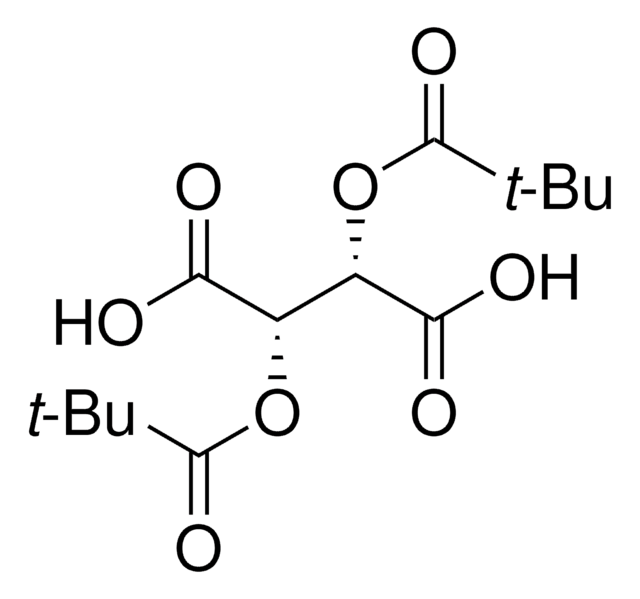67372
Melting point standard 283-286°C
analytical standard
Sinônimo(s):
Anthraquinone, ATQ
About This Item
Produtos recomendados
grau
analytical standard
Nível de qualidade
densidade de vapor
7.16 (vs air)
pressão de vapor
1 mmHg ( 190 °C)
prazo de validade
limited shelf life, expiry date on the label
pb
379-381 °C (lit.)
pf
283-286 °C (±0.3°C)
284-286 °C (lit.)
aplicação(ões)
food and beverages
pharmaceutical
formato
neat
cadeia de caracteres SMILES
O=C1c2ccccc2C(=O)c3ccccc13
InChI
1S/C14H8O2/c15-13-9-5-1-2-6-10(9)14(16)12-8-4-3-7-11(12)13/h1-8H
chave InChI
RZVHIXYEVGDQDX-UHFFFAOYSA-N
Procurando produtos similares? Visita Guia de comparação de produtos
Descrição geral
The mp value is recorded as an average of 6 to 12 measurements with a Büchi B-545 equipment that is calibrated against primary standards. Melting point is determined by Capillary method, as described in Ph. Eur. 2.2.14.
Aplicação
This product also features as a reference standard in thermal property investigations.
Características e benefícios
- Melting point calibration standard traceable to primary standards (LGC, London)
- Grade: Analytical Standard
- Melting point validated in the thermodynamic mode of analysis
- Standard deviation up to ± 0.3 °C
- Available with certificates of analysis and safety data sheet
Palavra indicadora
Danger
Frases de perigo
Declarações de precaução
Classificações de perigo
Carc. 1B - Skin Sens. 1
Código de classe de armazenamento
6.1C - Combustible acute toxic Cat.3 / toxic compounds or compounds which causing chronic effects
Classe de risco de água (WGK)
WGK 1
Ponto de fulgor (°F)
482.0 °F - closed cup
Ponto de fulgor (°C)
250 °C - closed cup
Equipamento de proteção individual
dust mask type N95 (US), Eyeshields, Faceshields, Gloves
Escolha uma das versões mais recentes:
Certificados de análise (COA)
Lamentamos, não temos COA para este produto disponíveis online no momento.
Se precisar de ajuda, entre em contato Atendimento ao cliente
Já possui este produto?
Encontre a documentação dos produtos que você adquiriu recentemente na biblioteca de documentos.
Os clientes também visualizaram
Nossa equipe de cientistas tem experiência em todas as áreas de pesquisa, incluindo Life Sciences, ciência de materiais, síntese química, cromatografia, química analítica e muitas outras.
Entre em contato com a assistência técnica










